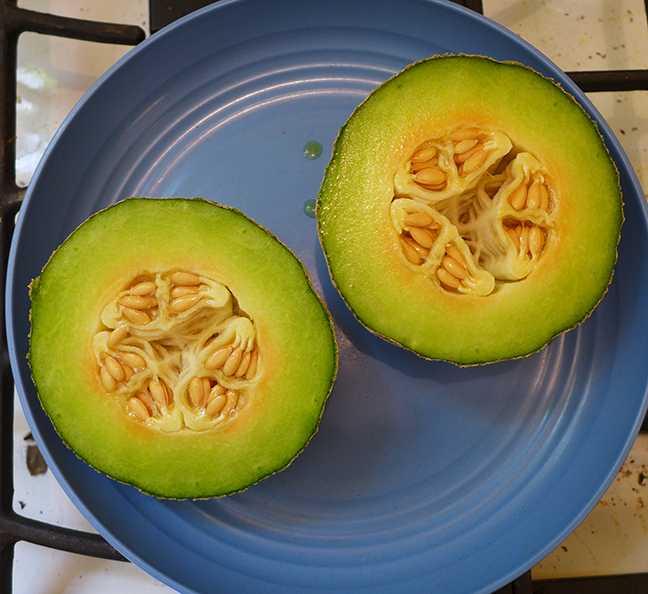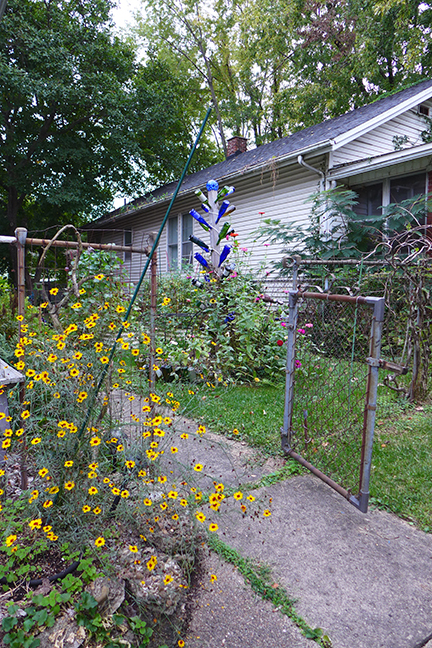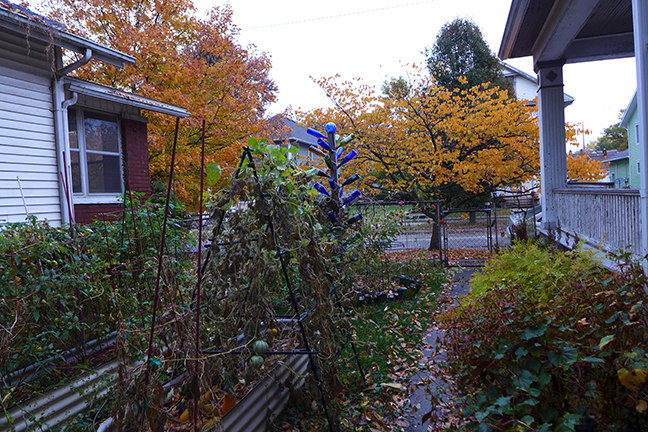Temperatures were all over the place in October. We began with days in the 90’s, but things quickly turned colder, and after the first week the lows were consistently forecast to go below 50. That was my signal to bring in my houseplants. Often, this process is really rushed because I like to leave everything out till the last minute, but then the last minute comes unexpectedly and the next thing I know I’m dragging a bunch of plants into the kitchen in the dark after work. This time around, I was able to spend an entire morning giving the plants a little TLC before I brought them inside and found places to put them all. Finding places for them is always a challenge because there are very limited spots inside the house where they will get enough light. Because of that and because they take extra fiddling indoors, I start looking forward to taking them outside again as soon as I bring them in.
Temperatures stayed pretty steady through the middle of the month. Some days were a little warmer and some were a little cooler, but there were no extremely warm or cold days. That meant everything could just keep growing pretty happily–as long as I watered. Our drought continued with hardly any rain to speak of. Leaves gradually started to change. My plants started to crisp here and there as they began to anticipate the end of the growing season.
I picked several rounds of lima beans and got a few more of the fancy blue beans I was trying to grow. Among the limas, I successfully got some very pretty ping zebra beans. I’ve been trying to grow them for a few years without success, but this year I’d read that they simply take a long time to mature. I took the suggestion of starting some plants early indoors, and that did the trick. The blue beans were an experiment that I shouldn’t try again, but it will be tempting to give it a shot. They have an amazing blue color, but only if they mature in cool temperatures. Apparently, temperatures here weren’t cool enough for blue beans until September, so I only got 5-7 blue ones, but those few were pretty spectacular!
I also got an assortment of tomatoes. Every time I enjoy fresh autumn tomatoes in a meal, I think of the guy I passed once at a farmer’s market who was proudly proclaiming that he never eats a fresh tomato after Labor Day because he thinks they’re inferior then. He’s missing out on a couple months of tasty tomatoes!
Things continued along until the final full week of October when temperatures ticked back up into the mid-80’s. Despite the toasty temps, the forecast was to end the month with a serious freeze, so I spent the final weekend of October working to harvest everything I possibly could. We also (finally) got rain, though that made the harvesting more difficult. I was able to harvest my sweet potatoes before the rain started, which made digging through the soil much easier. My harvest was ok, but not nearly as good as last year. The plants had looked healthy, so I’m not sure what happened. I also picked even more lima beans, a few more of the giant zucchino rampicante squash, all my basil, some tomatoes, and some melons that may or may not be ripe.
The zucchino rampicante squash was incredibly happy in my garden this year. I’d gotten three giant squashes from it in September and it was working on several more through October. Unfortunately, quite a few of them had blossom end rot and weren’t usable, but I also got the biggest one of the year that was about 34 inches long. Another had buried itself in my neighbor’s hydrangea plants. A few more of the squashes were still young and tender, so I picked those to eat like zucchini.
I’d hoped to have time to turn all the basil into pesto to freeze for later, but there was too much to do and I wasn’t prepared with enough of the right ingredients, so I decided to grind up the basil with a little olive oil and freeze that. My hope is that it will still be relatively easy to pull out of the freezer and turn into pesto one batch at a time.























































































































































































































































































































































































































































































































































































































































































































































